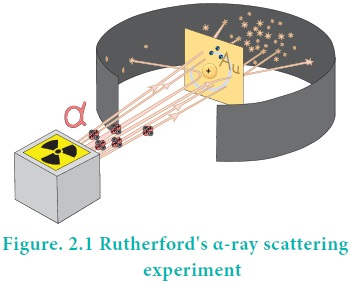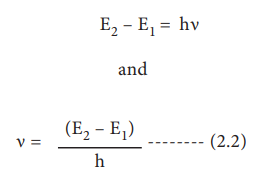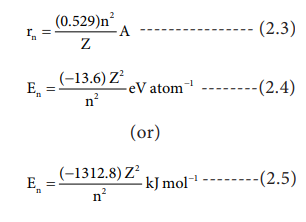Chapter: 11th Chemistry : UNIT 2 : Quantum Mechanical Model of Atom
Introduction to atom models
Introduction
to atom models:
Let us recall the history of the development of atomic
models from the previous classes. We know that all things are made of matter.
The basic unit that makes up all matter is atom. The word ŌĆśatomŌĆÖ has been
derived from the Greek word ŌĆśa-tomioŌĆÖ
meaning non-divisible. Atom was considered as non-divisible until the discovery
of sub-atomic particles such as electron, proton and neutron. J. J. ThomsonŌĆÖs
cathode ray experiment revealed that atoms consist of negatively charged
particles called electrons. He proposed that atom is a positively charged
sphere in which the electrons are embedded like the seeds in the watermelon.
Later, RutherfordŌĆÖs ╬▒-ray scattering experiment results proved that ThomsonŌĆÖs
model was wrong. Rutherford bombarded a thin gold foil with a stream of fast
moving ╬▒ŌĆōparticles. It was observed that
(i) most of the ╬▒ŌĆōparticles passed through the foil
(ii) some of them were deflected through a small angle and
(iii) very few ╬▒ŌĆōparticles were reflected back by 180┬░

Based on these observations, he proposed that in
an atom there is a tiny positively charged nucleus and the electrons are moving
around the nucleus with high speed. The theory of electromagnetic radiation
states that a moving charged particle should continuously loose its energy in
the form of radiation. Therefore, the moving electron in an atom should
continuously loose its energy and finally collide with nucleus resulting in the
collapse of the atom. However, this doesn't happen and the atoms are stable.
Moreover, this model does not explain the distribution of electrons around the
nucleus and their energies.
Bohr atom model:
The work of Planck and Einstein showed that the energy of
electromagnetic radiation is quantised in units of h╬Į (where ╬Į is the frequency
of radiation and is Planck's constant 6.626 ├Ś 10-34 Js). Extending
PlanckŌĆÖs quantum hypothesis to the energies of atoms, Niels Bohr proposed a new
atomic model for the hydrogen atom. This model is based on the following
assumptions:
1. The energies of electrons are quantised
2. The electron is revolving around the nucleus in a
certain fixed circular path called stationary orbit.
3. Electron can revolve only in those orbits in which the
angular momentum (mvr) of the electron must be equal to an integral multiple of
h/2ŽĆ.
i.e. mvr = nh/2ŽĆ -------- (2.1)
where n = 1,2,3,...etc.,
4. As long as an electron revolves in the fixed stationary
orbit, it doesnŌĆÖt lose its energy. However, when an electron jumps from higher
energy state (E2) to a lower energy state (E1), the
excess energy is emitted as radiation. The frequency of the emitted radiation
is
E2 ŌĆō E1 = h╬Į

Conversely, when suitable energy is supplied to an
electron, it will jump from lower energy orbit to a higher energy orbit.
Applying BohrŌĆÖs postulates to a hydrogen like atom (one
electron species such as H, He+ and Li2+ etc..) the
radius of the nth orbit and the energy of the electron revolving in
the nth orbit were derived. The results are as follows:

The detailed derivation of rn and En
will be discussed in 12th standard atomic physics unit.
Limitation of Bohr's atom model:
The Bohr's atom model is applicable only to species having
one electron such as hydrogen, Li2+ etc... and not applicable to
multi electron atoms. It was unable to explain the splitting of spectral lines
in the presence of magnetic field (Zeeman effect) or an electric field (Stark
effect). BohrŌĆÖs theory was unable to explain why the electron is restricted to
revolve around the nucleus in a fixed orbit in which the angular momentum of
the electron is equal to nh/2ŽĆ and a logical answer for this, was provided by
Louis de Broglie.
Related Topics